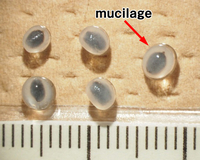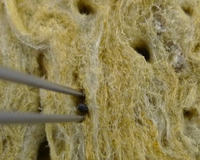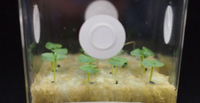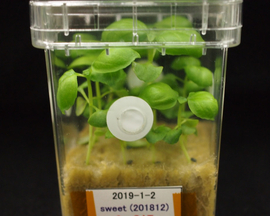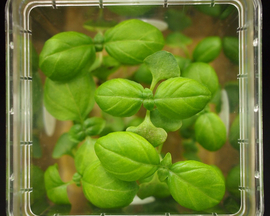This is an archive of information released in the past.
Disclaimer: It may contain broken links or outdated information. Some parts may not function in current web browsers.
*Visit https://humans-in-space.jaxa.jp/en/ for the latest information.

How to grow Sweet Basil
Written by Professor Kouichi SOGA, Osaka City University

Professor Kouichi SOGA, Osaka City University (Credit: Prof. SOGA)
Printer friendly version [PDF: 464.6 KB]
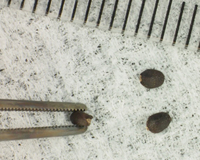
(Credit: JAXA)
In the AHiS space experiment, sweet basil is grown in space and on the ground, and the differences in growth and aroma are examined. Here, we will do some additional experiments using sweet basil.
First, get the sweet basil seeds. The seeds can be found at local or online garden stores. You need to sow the seeds so that seedlings can be easily observed. In this experiment, it is better to grow sweet basils on cotton or sponge containing water rather than on soil. Cotton and sponges are easily dried, so always make sure you have the right amount of water. If you can get agar powder, you can sow the seeds on hardened agar by broiling and cooling.
Prepare as many cultivation containers as the conditions to be compared. It is better to use a container with a lid to prevent the medium from drying out.
What is the shape of sweet basil seeds? Let's observe the shape of the seeds. Seeds are not round. The seed has a slightly pointed part, which has a whitish color. This part is called hilum, and the seed was attached to ovary (part of the female reproductive organ of a flower) in this part. A seed consists of embryo and its food supply. The embryo contains the earliest forms of root, stem and leaves.
The first major step of plant growth is called germination. When water is applied to the seeds, a substance like white jelly comes out of the seeds and wraps the seeds. This substance is called mucilage. Mucilage allows the seeds to keep the water needed for germination. Root comes out from the hilum part of the seed. After the root comes out, the stem (hypocotyl) grows. Once both root and stem has grown the embryo is officially deemed a seedling, and will grow into an adult plant. There are two seed leaves (cotyledons) at the tip of the hypocotyl. Immediately after germination, the cotyledons are covered with the seed coat (testa), but when the cotyledons become larger, the seed coat is removed.
Sweet basil prefers warm temperatures. Find a place at 20-25 degree C to grow sweet basil well. Temperature affects the germination and growth of sweet basil. Therefore, always check the temperature of the growing environment. When examining the effects of something, all other factors need to be unified. For example, when comparing growth with and without light, use the same cultivation container and use the same temperature, water conditions, etc. Also, the germination and growth of plants vary to some extent. So, it is advisable to grow under the same conditions.
« Back to Asian Herb in Space
| Copyright 2007 Japan Aerospace Exploration Agency | Site Policy |

